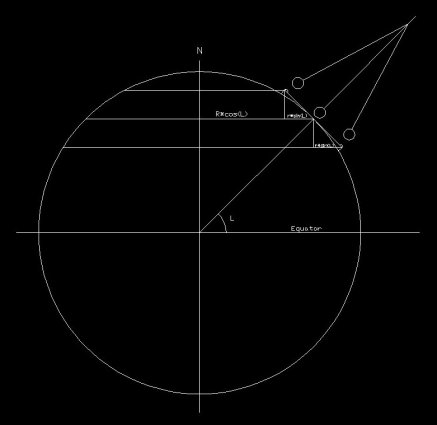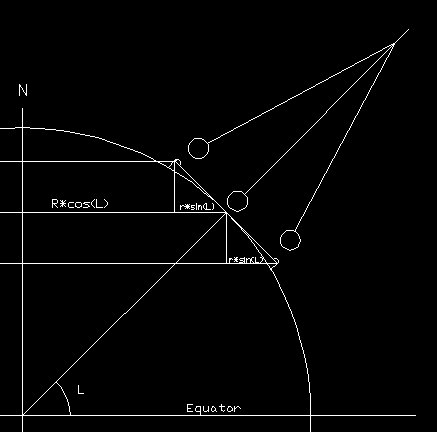In brief:
My first intuition told me that such a pendulum should make one turn in 24 hours, and yes, I soon realized that it would not work on the equator.
My first idea was that it does 24 hours, but near the equator the "rotational force" would become so weak that other effects will obscure the Foucault effect.
I was wrong.
Below I try to make the correct story a bit visible.
Go back for a while to Foucault's original experiment in the Paris Panthéon, 1851.
Around the resting point of the pendulum he had put a ring-shaped dike of moist sand on the floor. A pen protruding from the bottom of the bob could make a small ditch in it. The diameter of the sand ring might have been let's say 5 meter. The pendulum's period was some 16 seconds and with the precession for Paris, 32 hours, it would give some 2 mm per period, and that can be seen quite well, even after one swing.
I am going to upscale this experiment somewhat. I make the sand dike so large that almost the whole of Eurpe fits in it, and I make the pendulum also somewhat larger.

One should realize that the earth, seen from high above the northpole rotates counter clockwise. That's needed to have sunrise in the east.
In this figure the right side of the earth is moving into the plane of the drawing.
Watch the northern rim of the sand hill. It is rotating in 24 hours and so travels a distance fit for the lattitude there.
Now watch the southern rim. That one is also rotating in 24 hours, but must travel a far larger distance because of the lower lattitude.
In the time it takes the pendulum to go from the northern to the southern rim the southern has moved much more to the east than the northern.
The pendulum itself is not bothered by this difference in velocity. Seen from earth ik looks as if the pendulum's swing plane is rotating clockwise.

Enlarged.
The circumference at the resting point of the pendulum is 2 * pi * R * cos(L) where R is earth's radius and L the lattitude.
The circumferential velocity is then 2 * pi * R * cos(L) / 24 [km/hr]
On the northern rim the circumferential velocity is then 2 * pi * (R - r * sin(L)) * cos(L) / 24 [km/hr], where r is the radius of the sand rim.
You may divide both expressions by that what they have in common, that is 2 * pi * cos(L) / 24, and then rests for the first expression R and for the second
R - r * sin(L). The difference is r * sin(L). That is the difference in velocity in eastern direction between the center and sandring.
Some more jiggling with the equations gives us FP = sD * 1 / sin (lattitude) where sD is the length of the Sidereal Day. (see below)
And yes, the Foucault effect as we may call it is the same -but on a very small scale- as the more widely known Coriolis effect which is so important in meteorology, and causes winds around and into a low pressure area to circle anti-clockwise, and winds leaving a high pressure area to circle clockwise. At least on the northern hemisphere. On the southern hemisphere the directions are just opposite.
The latter ia also a strong argument against the so called "flat earth" theory.
Sidereal Day:
Even if we had our pendulum exactly at the North Pole we would not see a rotation in 24 hours, but slightly shorter, in 23:56:4.905 (hh:mm:ss).
This is called the Sidereal Day. It is the rotation of the earth with respect to the far "fixed" stars. The well known 24 hour period is measured w.r.t. the sun, but the earth is also rotating around the sun (in CCW direction, as seen from above the NorthPole) which makes the solar day somewhat longer.
The ~4 minutes difference each day add up to 1 day in a year.